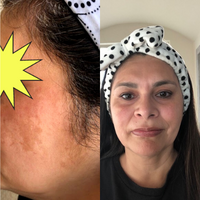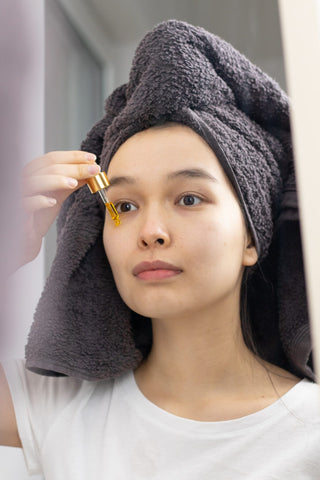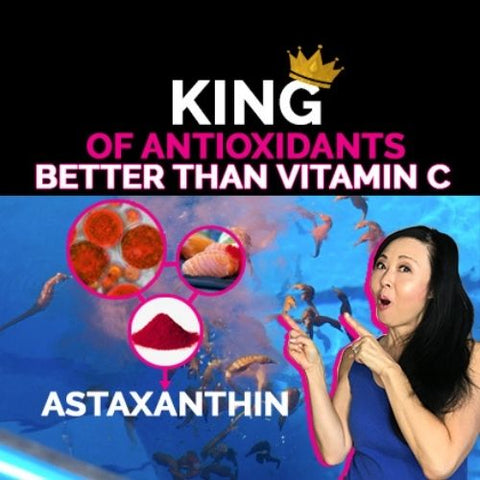Age Spot vs Skin Cancer: So you noticed a small brown spot that seem like it’s getting bigger or changing in appearance or a red patch that has a yellowish brown tinge to it.
How do you know whether to treat it for age spots or skin cancer?
This blog will go over the different types of age spots including one that is commonly mistaken for an age spot but could become pre cancerous.
Age Spot Type 1
Age Spot/Liver spot/ Solar Lentigenes/ Senile Lentigo-
-More common in adults over 50
-Younger people can get them if they spend a lot of time in the sun.
-More common in lighter skin types
-Common Areas:
-Face
-Arms
-Shoulders
-Hands
-Upper Back
Appearance:
These tend to be flat and oval. The color can range from tan, brown or black.
Size:
A small freckle size to about 1/2 inch across and can start to group together.
Causes: overactive and irregular pigmentation formation or a history of continual sun exposure or continual use of tanning beds.
These are not harmful and don’t need any medical attention
The best way to treat this type of age spot is prevention by avoiding sun exposure without sun protection because once hyperpigmentation begins to appear on the Stratum Corneum it is very fairly easy to fade them but difficult to keep them from coming back.
***Best Sunscreen that is also a moisturizers and helps lighten and treat hyperpigmentation.***
***Watch the video to see me treating my own age spot on the back of my leg.
Age Spot Type 2:
Macule– this is usually flat and not indented. It is usually a darker area measuing less than one centimeter wide and anyone at any age can have these.
Age Spot Type 3:
Seborrheic Keratosis (Senile Warts)– Unlike macules these are raised pigmented lesions. These are also known as the “barnacles of aging”.
-The numbers of these increase with age ,usually 5o and older
-These are benign and caused by keratinocytes (cells that create keratin)
-This type of age spot can run in families
The appearance of these are usually:
-yellowish, brownish or blackish color and may have a scaly/flaky/ bumpy in appearance
-these may itch and the size is usually small.
-usually found on the face, chest, back, shoulder, stomach and/or scalp
These can be treated by freezling (cryotherapy/cryosurgery), burning with electric current, laser treatment (ablation) or surgery.
These can be commonly mistaken for Actinic Keratosis if they start to look irregular in appearance by comparing them to the ABCDE of Skin Cancer.
The Five Warning Signs of Skin Cancer
Hyperpigmentation and Understanding How it Affects Your Skin Type
Age Spot vs Skin Cancer?
This sometimes is mistaken for an age spot but unlike most age spots being brown, these are usually flaky, scaly patches of skin that can range in color of light pink to brown.
The size is usually less than an inch and can be flat or slightly raised bump and sometimes hard like a wart.
These are mainly in areas exposed to the sun such as the face, lips, hands, forearms. scalp, neck and for men, the ears.
You will mainly see these on fair skinned people or under the Fitzpatrick skin type 1 (if you don’t know what this is, please click on the link Hyperpigmentation and understanding how it affects your skin type.
People who are more likely to develop this have light blonde/red hair and blue eyes.
-Have a history of intense UV exposure/sunburn
-Over 40 years of age
-Live where most of the year is sunny
-History of skin cancer /Actinic Keratosis
-Weakened immune system
-Best prevented by avoiding sun exposure and if caught early, removed before turning into skin cancer.
Now that you have a better idea of what different types of age spots there are vs what could appear to be skin cancer, you can decide if it needs to be looked at .
If you just don’t like the appearance of one of these age spots, you know there are different options on what you can do to remove them.
Please sign up on our email to be notified for our next post in the series of Hyperpigmentation, namely Melasma.
Remember, “Make Up is an Art and Skin Care is a Science.”
Follow us @:
YouTube Channel:https://www.youtube.com/channel/UC4XGWX6eheTisHo8UBsdOWA
Instagram:@GoSeeChristy
Facebook:https://www.facebook.com/goseeChristyBeautyBoutique/
Twitter:https://twitter.com/goseechristy
Pinterest:https://www.pinterest.com/goseechristy/
Sources:
AG Pandya and IL Guevara, Disorders of hyperpigmentation, Dermatol Clin 18 1 91–98 (Jan 2000)
https://www.ncbi.nlm.nih.gov/pmc/articles/PMC5418955/
https://www.ncbi.nlm.nih.gov/pmc/articles/PMC5342934/




